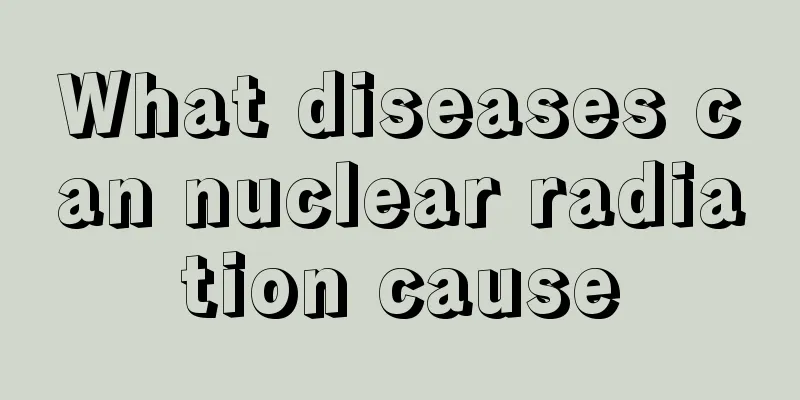What are the most common causes of cardiac syncope?

|
Cardiogenic syncope is a common disease that is caused by a sudden decrease in the heart's blood output, resulting in transient syncope. If it is not treated effectively in time, the chance of being fatal can be very high. From a clinical perspective, patients do not have obvious symptoms before the disease occurs, but suddenly faint when the disease occurs, and often suffer from falls or incontinence. This must be handled correctly. 1. Common causes of cardiac syncope Cardiogenic syncope is a brief loss of consciousness caused by a sudden decrease in cardiac output, which leads to a transient decrease in cerebral blood flow. Although it is relatively rare, it often has fatal consequences. If the cause can be found, most cases can be effectively treated. Causes of cardiac syncope include arrhythmias and organic cardiopulmonary diseases. Arrhythmias may occur secondary to organic heart disease, some of which can be directly or indirectly displayed by echocardiography. For example, ventricular premature beats or ventricular tachycardia may occur in the presence of intramural space-occupying lesions in the ventricular myocardium. Acute thrombotic pulmonary embolism can also induce arrhythmias through vagal nerve reflexes. For patients with suspected organic cardiopulmonary disease, echocardiography can help confirm or exclude cardiac causes of syncope. The European guidelines for the diagnosis and treatment of syncope point out seven main causes of cardiogenic syncope: "organic heart disease or cardiopulmonary disease." 2. Clinical features of cardiogenic syncope The prodromal symptoms of patients with cardiac syncope are often not obvious, and the attacks are generally unrelated to body position. There are many cases of falls and even incontinence. Cardiogenic syncope often occurs during stress or fatigue. Children with known heart structural abnormalities, a history of arrhythmias, or sudden death in the family may have cardiogenic syncope. When children faint, they may be pale, cyanotic, and have difficulty breathing; their heart rate and rhythm may change significantly; they may also have convulsions; and they may have edema and clubbing of the fingers, indicating cardiac syncope. All syncope associated with exercise or exertion should be followed by an electrocardiogram. Medical history, physical examination, and electrocardiogram can provide a preliminary estimate of the risk of cardiac syncope and sudden death, and are the basis for determining whether the child needs hospitalization. Echocardiography is rarely useful in patients whose medical history, physical examination, and electrocardiogram do not suggest cardiac syncope. However, echocardiography should be performed for patients with exercise-related syncope, syncope during swimming, heart murmurs, or a family history of sudden death or cardiomyopathy. For patients with syncope related to exercise, exercise testing, electrocardiogram, and blood pressure monitoring are helpful. |
<<: Does not eating breakfast in the morning mean that your intestines are eating shit?
>>: If you have persistent abdominal pain and cannot find the cause, beware of liver cancer
Recommend
How to choose the time to exercise in a day
As people's awareness of fitness increases, e...
Can I take Xiaoyanling if I have gastric erosion?
Normally, people's stomachs and intestines ne...
How to relieve muscle soreness after exercise
Exercise is an important guarantee for human heal...
Laryngeal cancer has a special preference for the vocal cords
Laryngeal cancer is a common tumor disease among ...
What are the common symptoms of osteosarcoma
There are many common symptoms of osteosarcoma. P...
Ultrasound differential diagnosis of endometrial cancer
Can ultrasound differential diagnosis of endometr...
What are the symptoms of pituitary tumors
The incidence of pituitary tumors accounts for ab...
The effect of lavender aromatherapy
Lavender is very common and convenient to buy. Th...
Will lung cancer recur after surgery? How to reduce recurrence?
Lung cancer is relatively serious. Even if you ac...
The top ten most delicious snacks in the world
Snacks play a relatively important role in our di...
Is colorectal cancer serious?
Colorectal cancer brings a lot of troubles. Many ...
The difference between spinal surgery and orthopedics
Some people simply cannot tell the difference bet...
How to improve your mental state
The competitive pressure in modern society is ver...
Is it okay not to have a follow-up check for thyroid cancer?
Whether it is okay for thyroid cancer patients no...
What can you eat to help your blood circulation?
Now that winter has arrived, the weather is getti...









